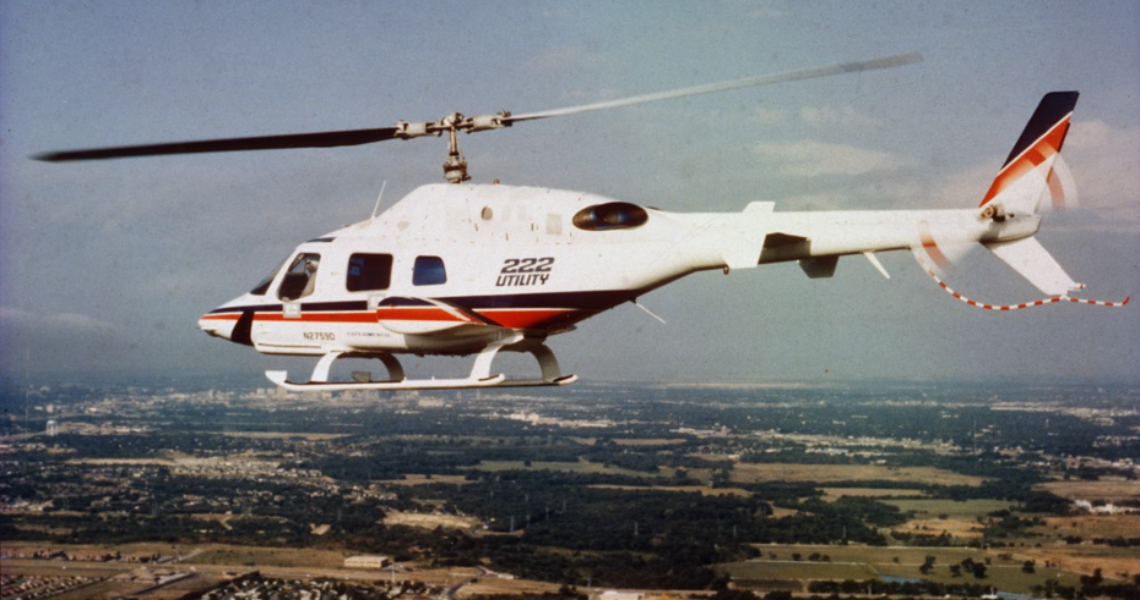When Arnold Schwarzenegger famously bellowed “Get to the chopper!” in the 1987 action classic, Predator, he was calling attention to a real-life superstar: a special mission variant of the Bell 212 (UH-1N Twin Huey). In the early scenes, the film also featured a Bell 206 JetRanger. The two Bell helicopters that helped define the film’s intense, action-packed scenes went on to become staples in countless Hollywood films.
Bell’s helicopters have become synonymous with the action genre and have left a lasting impact on movie screens, most recently appearing in Mission Impossible, The Final Reckoning.
The first generation: setting the stage for helicopter action
Bell’s Hollywood journey to stardom began in 1974, when the Bell 47G-5A made a key appearance in Gone in 60 Seconds. Agile and lightweight, this versatile aircraft wasn’t just part of the chase – it was the chase, showcasing its ability to keep pace with the film’s breakneck energy.
Fast-forward to 1983, and the Bell 206B JetRanger III starred in Scarface. This sleek and dependable model played a pivotal role in some of the movie’s most gripping escape sequences – and was the perfect match for Hollywood’s growing appetite for aerial thrills.
Although technically not silver screen, the hugely popular 80s television program, Airwolf (1984), centered around a daredevil pilot and his covert ops for a secret government agency, deserves a mention here nonetheless. The fictional attack helicopter was heavily based on the Bell 222, modified to give it its futuristic capabilities, and take it to beloved icon.
The second generation: a new era of high-tech action
The Bell 222 starred in X-Men (2000), where its sleek design and impressive performance helped elevate the (now) cult film’s futuristic world, contributing to some of its most thrilling aerial scenes. Just a few years later, the first of the iconic Huey dynasty, the Bell UH-1 Iroquois, featured in Transformers (2007), adding authenticity to the film’s high-energy battle sequences.
The third generation: Bell’s continued legacy in modern cinema
By the 2010s, Bell platforms were firmly established as integral to Hollywood’s most elaborate action sequences. Always a favorite, the original Bell UH-1 Iroquois featured in The Expendables 3 (2014). In 2016, another UH-1 (this time the Bell UH-1N Iroquois) made an appearance in War Dogs. In real life, the latest Huey incarnations, the AH-1Z Viper and its utility counterpart, the UH-1Y Yankee, are being produced and deployed by modern militaries all over the world, but they also star in video games like Call of Duty or television series, such as S.H.I.E.L.D. or Stranger Things.
It’s not just the Huey that sees all the action – also in 2016, the Bell 407 played a key role in Deepwater Horizon, where it was used to transport survivors from the real-life oil rig disaster. Its reliability and versatility helped create a sense of urgency during the emotional rescue scenes.
An icon in its own right, Hollywood or otherwise, the Bell V-22 Osprey, with its unique tiltrotor design and cutting-edge technology, played a pivotal role in Godzilla vs Kong (2021), with its ability to transition between vertical take-off and forward flight, making it the perfect helicopter for the epic scenes portrayed in the movie.
The V-22 made another appearance at cinema screens across the globe in the moving finale, Venom: The Last Dance (2024), and most recently in the newly premiered Mission Impossible movie The Final Reckoning (2025). There are multiple orders during the film to “Get to the Osprey!”, and numerous scenes beautifully showcase the powerful tiltrotor technology that allows for the rapid extraction of troops from perilous situations as well as the transportation of military personnel from aircraft carriers.
From the first days of the Bell 47G-5A to the cutting-edge V-22 Osprey, Bell’s helicopters have been a central part of some memorable moments in film history. Whether featured in high-energy action scenes or playing a vital role in a heroic rescue, Bell’s legacy in Hollywood continues to grow.



